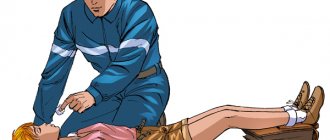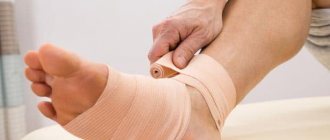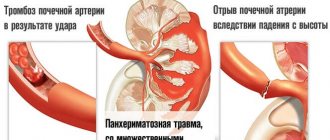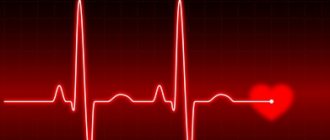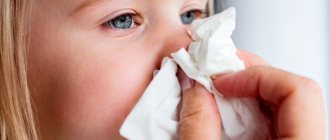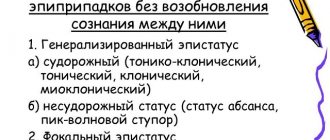10.06.2019
Interesting
Natalia Adnoral
Heat is energy. Internal heat is both a result and a condition for the natural functioning of our body. External is a necessary factor in maintaining his life. But everything is good in moderation. Both a lack and an excess of thermal energy are destructive for all living things. Especially for a person with his “narrow comfort zone”.
Why does a person overheat?
The human body is capable of maintaining a temperature of about 36.7 degrees Celsius. Excess heat is removed from the body through sweating. However, the natural process of thermoregulation may be disrupted if a person:
- is exposed to high temperatures and high humidity for a long time,
- is exposed to direct sunlight,
- moves intensively in a hot and stuffy room,
- dressed too warmly
- doesn't drink enough.
If normal cooling of the body is impossible, the water-salt balance in the body is disturbed, blood circulation and heart function worsen. This can lead to serious consequences, including cardiac arrest or brain hemorrhages. Heat injury can occur anywhere: on the beach, on the street, and even in the office. In any case, it requires immediate assistance
and, in case of severe symptoms, urgent consultation with a doctor.
How to behave in the heat
Sergey Boytsov, chief specialist in preventive medicine at the Russian Ministry of Health and Social Development, director of the State Research Center for Preventive Medicine, talks about how to improve your well-being on the hottest summer days.
Causes of Heat Stroke
Our organs and systems have very strict temperature requirements for the internal environment - the spread is only a few degrees. The external permissible range is somewhat wider due to numerous physico-chemical and psychological adaptive mechanisms controlling heat production and heat transfer:
- increased/decreased sweating and urination;
- decrease/increase in motor activity;
- increased/decelerated breathing rate and heart contractions;
- dressing/undressing, etc.
But it is also very small, since these mechanisms are not omnipotent. Especially if the time and/or intensity of heat exposure is large. Moreover, their critical values are individual. Some people suffer more from overheating, while others tolerate it much more easily.
What does this depend on?
- From genetic factors (for example, representatives of the Negroid race are more resistant to overheating).
- From acquired physical and psychological habits to a certain climate.
- From age.
- On the presence/absence of diseases.
- The presence/absence of “aggravating circumstances” accompanying heat exposure.
The following factors increase the body’s susceptibility to overheating and aggravate its consequences:
- Children and old age (in both of them the mechanisms of thermoregulation are weakened).
- Overweight.
- Acute and chronic ailments (high blood pressure, neurocirculatory dystonia, heart and kidney failure, endocrine pathologies; diseases accompanied by increased body temperature, etc.).
- Chronic stress in the exhaustion phase or negative psychological perception of the very fact of overheating.
- Taking medications that increase heat production by the body itself (for example, caffeine, ephedrine, dopamine).
- Physical activity in conditions of elevated ambient temperature.
- Clothing made from materials that interfere with heat dissipation.
What to do?
1. Hide from direct sunlight in the shade or cool room. 2. Take a horizontal position. 3. Unbutton or remove clothing. 4. Turn on the fan or wet your body with cool water. 5. Drink cool, salted water in small sips to restore the balance of minerals and fluids in the body. 6. Never drink alcohol or drinks containing caffeine. They cause dehydration. 7. If a person’s condition does not improve after a while or gets worse, call a doctor immediately.
What is sunstroke
Sunstroke is a distinct form of heatstroke caused by exposure to sunlight. Children, elderly people, and people with systemic diseases easily get sunstroke. This is due to immature or impaired thermoregulation mechanisms of the body.
The sun's rays heat the head, causing parts of the brain to overheat. Gradually, the meninges swell, the cerebral arteries dilate, and the functioning of the centers responsible for the action of the main organs and systems is disrupted.
Sunstroke is diagnosed in the same way as heatstroke, by interviewing and examining the patient.
How to avoid overheating of the body?
1. Start your day early.
The lowest temperature on hot days is usually in the morning.
If you have to work outside or have a long commute to the office by public transport, get up early. Most likely, you will have time to find yourself in a cool room before the extreme heat begins. 2. Drink more fluids.
Carry a bottle of water with you and drink regularly, even if you don't feel like it.
Try to drink cool, but not ice-cold water. Avoid sugary drinks, alcohol and caffeine, which quickly lead to dehydration. 3. Take frequent breaks.
If you work outside or have to walk in the heat, try to rest more often - at least 15 minutes every hour and a half. A shady place or a cool room is suitable for relaxation.
Feeling great in summer
The chief physician of the Treatment and Rehabilitation Center of the Ministry of Health and Social Development of the Russian Federation, Tatyana Shapovalenko, tells how to survive the summer heat.
4.
Choose light clothing.
On hot days, give preference to light-colored clothing made from lightweight material.
Choose loose-fitting items that allow air to circulate freely along the body. Avoid tight, tight-fitting synthetic materials that do not allow air to pass through. Don't forget about a light, light-colored hat. 5. Streamline your workflow.
In the midst of the heat, cancel trips on public transport, work in your garden and other activities that require physical activity.
6. If you come to a resort,
give your body time to acclimatize.
Don't go out into direct sunlight on the first day - allow yourself to be lazy in the shade. 7. Monitor your condition.
If you feel tired, dizzy or slightly nauseous, immediately move to a cool room.
First aid for heat and sunstroke
The risk of heatstroke does not only exist in the summer. It is enough to be in a stuffy, poorly ventilated room with high humidity. If you are also wearing clothes that interfere with normal sweating, the risk of heatstroke increases many times over.
At first you feel dry mouth and intense thirst. If at the same time you also begin to have a headache or dizziness, accompanied by weakness and nausea, it is better to listen to the body’s “cry for help” and take the necessary measures. Otherwise, heat stroke is inevitable.
The first thing you must do is to ensure normal access of oxygen to the body and restore heat exchange. Remove excess, obstructive clothing. If possible, cool your body with water. Even better, make a compress on your head using a wet towel or napkin. The evaporating water will help lower the temperature. If you can take a refreshing, cool shower, do it immediately! Remember, heatstroke occurs quickly, and the more decisive and energetic your actions are, the less likely you are to get it.
Never hope that symptoms will go away on their own. Don't forget that heatstroke kills thousands of people every year. Apply the same actions to a person who did not protect himself from heatstroke. Help the victim move to a cooler place and provide him with normal heat exchange, as indicated above. Better yet, find a room with air conditioning or at least a fan. Help the victim remove clothes. If he is unconscious, you will have to undress him yourself. Don't forget the compress on your head!
After providing first aid, try to place the victim under a shower or in a bath, and if this is not possible, wipe his body with a wet towel. It doesn’t matter in what way, but the main task is to immediately cool the body.
You can also improve heat transfer by using a massage of the arms and legs, which will help restore normal blood circulation and ensure the outflow of heat. Do these procedures very carefully, and preferably together.
The body should be cooled only until its normal temperature is reached, which it is advisable to control with a thermometer. After this, carefully monitor the patient’s condition, and, of course, stay with him until the ambulance arrives or during the trip to the hospital.
Sunstroke
If you spend a long time under the scorching rays of the summer sun, you run the risk of becoming closely acquainted with another type of heatstroke - sunstroke. The likelihood of it happening is very high, especially if you neglect basic means of protection in the form of a hat or other headgear.
The symptoms of sunstroke and the symptoms of regular heatstroke are similar. It all starts as usual: dry mouth and severe thirst appear, then the head begins to hurt and sometimes feel dizzy. Some people experience tinnitus. Then nausea comes, and sometimes vomiting begins. In addition to all the above symptoms, there may also be a severe sunburn caused by exposure to ultraviolet radiation, which is so abundant in the sun’s rays, which are far from gentle on a hot day.
First aid techniques are similar to those above for heatstroke. In the same way, transfer or transfer the victim to a cool place, into fresh air and undress him, then lay him down. Provide him peace and quiet. Place a cold, wet compress or ice on his head. Make sure he doesn't get a severe sunburn as well. If this happens, be sure to bandage the affected area with a clean cloth or bandage; you can also lubricate the burn with cream or sour cream.
In any case, call the victim an ambulance, or take him to the hospital yourself.
Remember that sunstroke can be easily avoided. To do this, you just need to dress in loose, light-colored clothing in sunny weather. Do not neglect your headdress. Sunbathers should also remember to wear sunscreen and hats.
What to drink in the heat?
1. It is best to drink plain water. For every 1000 kilocalories consumed, it is recommended to drink about a liter of water. If it is water from a central water supply or from your personal well, or from a personal/collective well, you must be sure that it is water of good quality.
If we drink mineral water, then only table water (with salt content up to 1 g per liter), not medicinal (unless, of course, you are prescribed medicinal mineral water by a doctor). At the same time, you should know that a glass bottle is preferable to a plastic one, and still water is healthier than sparkling water. Carbonated mineral waters (especially if they are carbonated artificially) can disrupt the acid-base balance of the body.
2. In second place after water is cool, weakly brewed tea, preferably with lemon. The benefit of green tea is its high content of flavonoids, which have a positive effect on blood vessels. The benefit of black is the caffeine it contains, which is a better tonic.
3. In third place are juices and nectars with a low sugar content. But don’t forget: you need to drink them on an empty stomach or between meals - an hour and a half before or after meals. And limit yourself to two or three glasses a day.
4. In fourth place are milk (with fat content up to 3.5%) and fermented milk products (kefir, fermented baked milk, yogurt and yogurt).
What not to drink in the heat?
Sweet carbonated drinks, coffee, beer and spirits. All this puts stress on the heart and blood vessels in the heat and can pose a serious danger to the health of even the strongest person.
How to drink in the heat?
1. It is advisable to drink either half an hour before meals or an hour after. Then the incoming liquid will not interfere with normal digestion.
2. You should not drink more than 150-200 ml of water at a time, this leads to excessive stress on the heart and kidneys.
3. During physical activity, it is recommended to drink before, during and after it. Preference should be given to hard water containing large amounts of potassium, magnesium and other electrolytes.
4. You should not drink too cold water, because water with a temperature below 20 degrees never quenches thirst, because the temperature in the human gastrointestinal tract is 36 ° C and above, and when cold water gets there, the mucous membrane is cooled and inhibited processes of digestion and absorption. The vessels of the intestinal mucosa reflexively contract from the cold, water does not flow from the intestines into the blood, and the body cannot “get drunk” for a long time.
As one of the options, we recommend the following drinking regime:
1. In the morning, before and after breakfast, you can drink tea, coffee, water or juice as much as you want. Then, for the next two hours, do not drink at all or relieve dry mouth with a small sip of water. By the way, if you endure the first acute desire to drink, then later thirst is more easily tolerated.
2. During the third and fourth hours, drink one glass of cool water in small sips. Before lunch, you can allow yourself another glass of soft drink, but an hour after lunch you can drink as much as you want.
3. A similar drinking regimen should be followed in the afternoon, that is, in the next two hours after quenching your thirst, do not drink any more, but drink a glass of cool water over the next two hours. Before dinner you will have to limit yourself to one glass of liquid. It is better not to drink at night.
Symptoms
The symptoms of sunstroke and heatstroke are similar:
- weakness, lethargy, drowsiness;
- thirst, dry mouth;
- headache;
- feeling of heaviness in the chest;
- pulse above 90 beats/min;;
- skin redness;
- rapid, shallow breathing;
- tachycardia, nausea and vomiting;
- unsteadiness of gait;
- fainting;
- convulsive syndrome.
The symptoms of heat stroke in young children have their own nuances. The child may have a nosebleed, yawn frequently, and become irritable. Children can get heatstroke even in the complete absence of sun, so their condition should be monitored especially strictly in the summer.
Symptoms increase in direct proportion to the severity of heat stroke. It all starts with lethargy and headaches, and decreased physical activity. If measures are not taken in time, headaches and attacks of nausea will appear. If hallucinations, delirium, or confusion occur, you should immediately call an ambulance.
Causes
The main cause of sunstroke is exposure to the sun without a hat. The critical time is strictly individual for each person. For this reason, it is strictly prohibited for children, including newborns, to be exposed to the sun without a hat. The younger the child, the more vulnerable he is.
Heatstroke can occur as a result of work activity, for example, during a long stay in a stuffy workshop. High physical activity, high air humidity, tight closed clothing, and insufficient fluid intake are important.
People who suffer from the following conditions are more susceptible to heatstroke:
- arterial hypertension;
- diabetes;
- cardiac ischemia;
- tachycardia;
- cardiomyopathy;
- vegetoneurosis
- bronchial asthma;
- cirrhosis of the liver;
- hepatitis.
The risk group includes pregnant women, people who have had a stroke and myocardial infarction.
How to avoid sun and heatstroke
Carefully follow the advice of the Ministry of Health:
- If possible, do not leave your home between 11 a.m. and 5 p.m.
- Wear clothes made from natural fabrics.
- Cover your head with a light light hat, Panama hat, or scarf.
- Maintain drinking regime. Take water with you when leaving home.
- Use creams with sunscreen.
- It is useful to take a shower after being in the sun.
- Avoid being in the sun for long periods of time, especially on an empty stomach.


